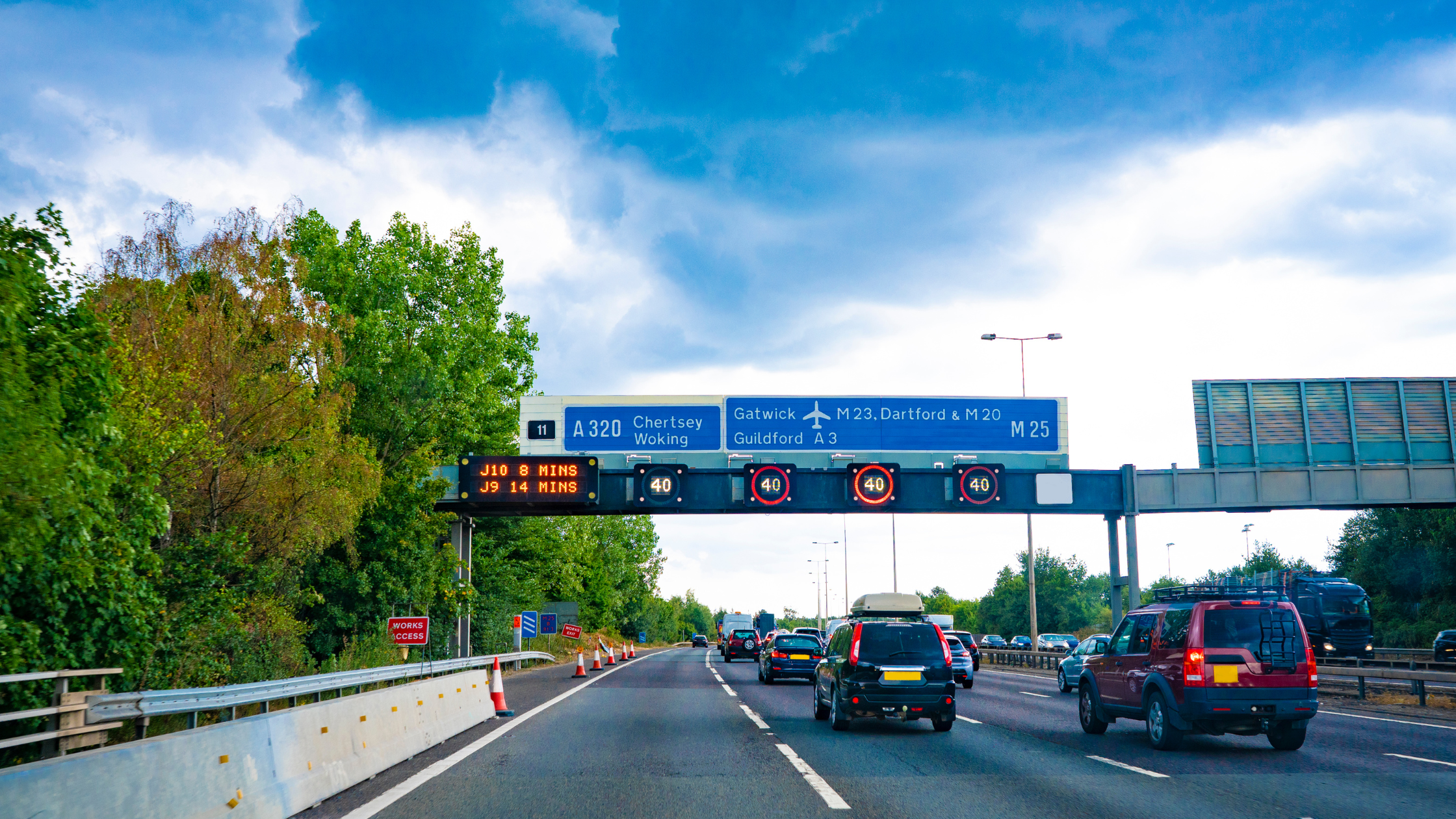Traffic signs are one of the most important elements of road safety in the UK. They help drivers, cyclists, and pedestrians understand what to do in different situations, whether that is stopping, slowing down, changing direction, or avoiding hazards. For learner drivers, remembering traffic signs is essential for two reasons: first, they are a major part of the theory test, and second, they guide your decisions during real-world driving.
Many learners find traffic signs challenging at first. With so many shapes, colours, and meanings, it can be easy to feel overloaded. With the right strategies, you can learn to recognise and recall them quickly.
Common UK Traffic Signs and Their Meanings
Here is a quick-reference table of some of the most common traffic signs you will encounter during your lessons and in your theory test.
| Sign Example | Type | Meaning |
 |
Regulatory (octagon) | You must come to a complete stop and proceed only when safe. |
 |
Regulatory (inverted triangle) | Slow down and give way to traffic on the main road. |
 |
Regulatory (circular with red border) | Maximum permitted speed is 30 mph. |
 |
Regulatory (circular with red border) | Vehicles are not allowed to overtake here. |
 |
Regulatory (blue circle) | Mandatory roundabout ahead, follow the circular flow. |
 |
Warning (triangle) | Pedestrian crossing ahead, prepare to slow down or stop. |
 |
Warning (triangle) | Children likely to cross, reduce speed and take care. |
 |
Information (blue rectangle) | Direction sign for motorway routes. |
 |
Information (brown rectangle) | Indicates nearby tourist or leisure attraction. |
Why Traffic Signs Matter
Before diving into learning techniques, it is worth reminding yourself why traffic signs are so important.
- Safety: They alert drivers to hazards, restrictions, and rules. For example, a triangular warning sign before a sharp bend gives you time to slow down.
- Legal requirement: Failure to obey traffic signs can result in fines, penalty points, or even disqualification.
- Theory test preparation: Questions about traffic signs form a core part of the multiple-choice section, and they may also appear in hazard perception clips.
- Driving test success: Examiners watch closely to see if you recognise and respond correctly to traffic signs during lessons and the test itself.
If you want more detail about what is required for your test, see our guide to how to pass your driving test first time.
Understanding the Categories of Traffic Signs
The Highway Code groups traffic signs into three main types:
- Circular Signs = Orders
- Give direct instructions such as speed limits, no entry, or turn restrictions.
- A red border means “do not do this”, while a blue circle usually indicates something you must do, such as a minimum speed or a turn direction.
- Triangular Signs = Warnings
- Warn of hazards ahead, such as sharp bends, junctions, or slippery roads.
- Almost always have a red border and white background with a black symbol inside.
- Rectangular Signs = Information and directions
- Used for guidance and navigation, including motorway signs, tourist information, or lane directions.
- Colour indicates the type of road: blue for motorways, green for primary routes, white for local roads, and brown for tourist attractions.
Learning these categories makes traffic signs easier to process. Instead of trying to memorise hundreds of individual signs, you can learn the rules of shapes and colours, then apply them quickly in your theory test and lessons.
For the full list of signs, visit the Highway Code traffic signs section.
Practical Tips for Remembering Traffic Signs
1. Learn the Shape and Colour First
Instead of memorising every sign one by one, start by learning what shapes and colours mean. A triangle always warns, a circle always commands, and rectangles provide information. This gives you a simple framework.
2. Use Flashcards and Apps
Flashcards remain one of the best ways to memorise traffic signs. You can use physical cards or download apps specifically designed for the UK theory test. Repetition is key, so review them for just 10 minutes a day to build recognition.
3. Connect Signs with Real-Life Locations
When you are out walking or travelling as a passenger, pay attention to the signs around you. Linking what you see on the road to the rules you have studied helps cement them in memory.
4. Focus on Common Signs First
Not all signs appear frequently. Focus first on the most common ones you will encounter during lessons, such as speed limits, give way, stop, no entry, pedestrian crossings, and roundabout signs.
5. Group Similar Signs Together
For example:
- “No” signs (red border circles such as no cycling, no overtaking).
- Hazard warnings (triangles such as school zone, level crossing, crossroads).
- Information signs (blue motorway, brown tourist attractions).
Grouping reduces the load on your memory.
6. Test Yourself Under Pressure
The theory test requires quick recognition. Time yourself when using practice questions. This will get you used to thinking fast, just as you will need to on the road.
Common Mistakes Learners Make
Even with preparation, learners often make mistakes with traffic signs. Here are some pitfalls to avoid:
- Assuming meaning: Some signs do not mean what you might guess. For example, a red circle with black and red cars means “no overtaking”, not “cars ahead”.
- Ignoring colours: Forgetting that motorways are blue and primary routes are green can cause confusion during navigation.
- Missing context: Signs are designed to be read alongside road markings. For example, a give-way triangle is reinforced by painted lines on the road.
If you are unsure, revisit the official Highway Code signs to double-check.
How Driving Lessons Reinforce Traffic Signs
Reading about signs is useful, but nothing beats learning them in practice. During your driving lessons, instructors will highlight signs in real time, explain their meaning, and show how to respond safely.
For example:
- At a zebra crossing, you will practise slowing down and checking for pedestrians.
- When approaching a no entry sign, your instructor will show you how to identify safe alternatives.
- At a roundabout, you will use directional signs to plan your exit correctly.
This real-world reinforcement makes signs far easier to remember than book learning alone.
Building Confidence for the Theory Test
To pass your theory test first time, combine study with active practice:
- Read the Highway Code traffic signs section thoroughly.
- Use online mock tests to test your knowledge.
- Review signs regularly until you can recall them instantly.
- Discuss tricky signs with your instructor during lessons.
At Wimbledon Driving School, we encourage learners to integrate theory and practice. Many of our students find that after a few weeks of lessons, signs that once seemed complicated become second nature.
Key Points to Remember
Remembering traffic signs may feel overwhelming at first, but breaking them into shapes, colours, and categories makes the task manageable. Use tools such as flashcards and apps, practise on real roads during lessons, and test yourself under time pressure.
Key points to remember:
- Circular signs give orders (red border = prohibition, blue = mandatory).
- Triangular signs warn of hazards.
- Rectangular signs provide information and directions.
- Colours indicate road type: blue for motorways, green for primary routes, white for local, and brown for tourist.
By preparing early and practising consistently, you will not only pass your theory test but also build strong habits that keep you safe on the road.
Ready to start learning?
Book your first lesson with Wimbledon Driving School and let our experienced instructors help you prepare for your practical tests as well as useful tips for your theory.





